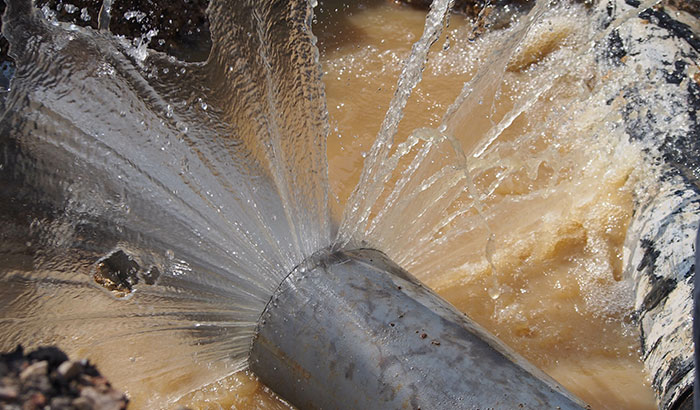How to Handle a Burst Pipe: Essential Steps for Immediate Action
Wiki Article
Protecting Against Ruptured Piping: Vital Tips to Protect Your Pipes
Stopping ruptured pipes is an essential problem for homeowners, especially throughout cooler months when the threat of cold is enhanced. Applying calculated actions such as correct insulation, routine inspections, and preserving regular interior temperatures can dramatically decrease the chance of pipeline failure. Furthermore, recognizing emergency treatments furnishes house owners to respond swiftly to possible pipes issues. Lots of are uninformed of the specific vulnerabilities that their pipes may face. Discovering these susceptabilities can offer vital insights into safeguarding your plumbing system efficiently.Understand Pipeline Vulnerabilities
Comprehending pipe vulnerabilities is crucial for effective pipes maintenance and preventing pricey damages. Numerous factors contribute to the susceptibility of pipelines to bursts, consisting of product composition, age, and ecological problems. Older pipelines, specifically those made from galvanized steel or polybutylene, frequently break down in time, leading to increased threat of leakages and tears.Temperature level variations can likewise considerably influence pipeline integrity. In chillier environments, water entraped in pipes can freeze, increasing and exerting stress on the pipeline wall surfaces, which may ultimately bring about a ruptured. Furthermore, high water pressure can strain pipelines, especially at bends and joints, enhancing the probability of failing.

Insulate Water Lines Appropriately
Appropriate insulation of pipes is critical for avoiding cold and subsequent bursts throughout chilly weather condition (burst pipe). Shielding your pipes system properly safeguards against temperature level drops that can result in expensive damages. Begin by determining vulnerable locations where pipelines are exposed to exterior temperature levels, such as basements, attics, and exterior wallsUse foam pipeline insulation sleeves or cover insulation tape around these locations to provide a protective obstacle. Make sure that all sections of the pipes, specifically those with restricted warmth direct exposure, get sufficient insulation. Pay special attention to joints and fittings, as these are a lot more prone to cold.
When insulating, it's vital to select materials that satisfy local building regulations and are ideal for the certain atmosphere. Fiberglass insulation is commonly advised for its thermal resistance buildings. Additionally, consider making use of heat cable televisions or tape in severe problems, which can be connected in to supply supplementary warmth
Frequently examine protected pipelines for any type of indications of wear or damage, as endangered insulation can lessen its effectiveness. By taking these positive actions, you dramatically reduce the danger of pipeline bursts, making certain Website a trustworthy pipes system throughout the winter season.
Maintain Constant Temperature
A steady interior temperature is necessary for avoiding ruptured pipelines throughout the freezing months. When temperatures drop, water within pipelines can ice up, increasing and developing stress that may ultimately create the pipelines to burst. To reduce this threat, property owners must maintain a constant temperature level throughout their home, preferably no lower than 55 ° F(13 ° C)Using a programmable thermostat can aid manage indoor temperature levels efficiently, guaranteeing that rooms with plumbing remain cozy also when your home is empty. Pay unique focus to areas that are extra at risk to cool, such as cellars, garages, and attics. Maintaining cupboard doors open under sinks can also enable warmer air from the home to flow around plumbing.This minor flow of water can prevent freezing by alleviating pressure within the pipes. By implementing these methods, house Learn More owners can substantially minimize the threat of pipe ruptureds and protect their pipes systems against the extreme winter months components.
Consistently Evaluate Pipes
Normal evaluations of pipes systems are essential for preventing ruptured pipelines and maintaining general home integrity. During these evaluations, it is vital to analyze visible pipes for indicators of rust, leakages, or wear.In addition, checking links and joints is vital, as these factors are commonly prone to leakages. Home owners ought to additionally examine water pressure levels, as excessive pressure can strain the pipes system and raise the risk of pipeline bursts.
Think about organizing specialist pipes inspections at least when a year, especially prior to winter, to guarantee your system is prepared for chillier temperatures. By being aggressive in your strategy, you can protect your home versus the pricey and disruptive consequences of ruptured pipelines.
Know Emergency Treatments
Comprehending emergency situation treatments is important for every property owner, especially after conducting normal pipes examinations. Being prepared for a pipes emergency can dramatically minimize damages and conserve prices.
Next, maintain vital tools useful. A pipes emergency kit must include a wrench, bettor, and towels, along with a flashlight and a pail for little leaks. Additionally, think about having the get in touch with info for a relied on plumbing conveniently offered, needs to the circumstance rise past your control.
If you detect a leak or burst pipeline, right away shut off the supply of water and alert your plumber. Additionally, record the damage with photos for insurance policy purposes. burst pipe. Know the indications of potential pipes concerns, such as uncommon water stress fluctuations or damp areas on wall surfaces
Inevitably, proactive knowledge and swift action are vital in handling plumbing emergencies, ensuring your home continues to be secured and reducing possible damages.

Final Thought
To conclude, stopping burst pipes requires a diverse approach that includes understanding pipe susceptabilities, proper insulation, preserving consistent interior temperature levels, normal evaluations, and expertise of emergency situation procedures. By implementing these vital techniques, the risk of pipes failures can be considerably reduced, consequently guaranteeing the durability and effectiveness of the plumbing system. Positive procedures not just safeguard against potential damage but also add to total water preservation and the protection of property.In cooler environments, water caught in pipes can ice up, applying and increasing pressure on the pipe wall surfaces, which might eventually lead to a burst. When temperature levels drop, water within pipes can freeze, producing and increasing pressure that may ultimately trigger the pipes to burst. By applying these methods, home owners can considerably decrease the danger of pipe bursts and secure their pipes systems against the extreme winter components.

Report this wiki page